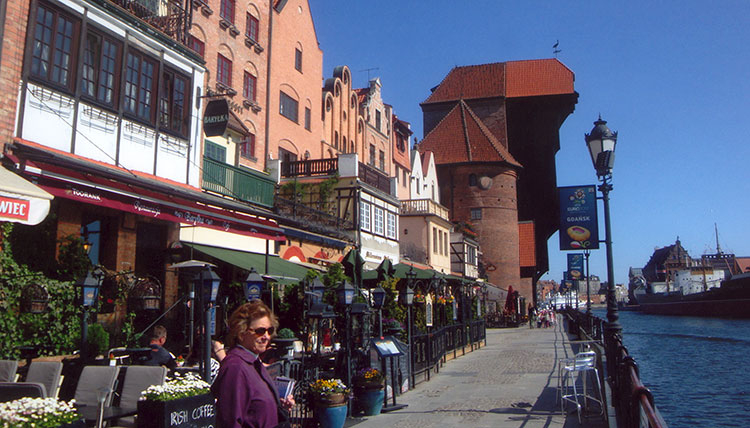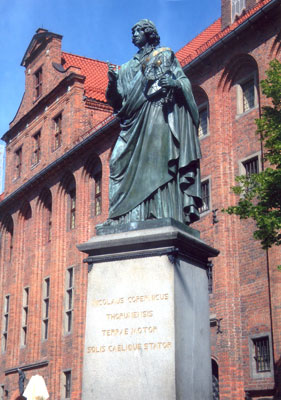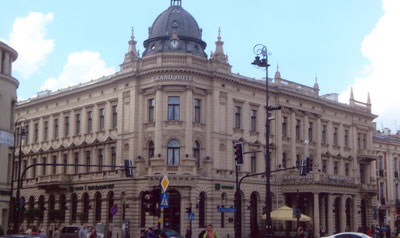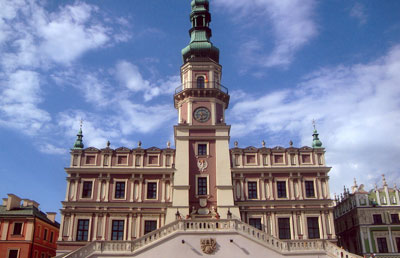Fascinated with Poland and its people
This article appears on page 48 of the October 2013 issue.
Our fascination with Poland began with a trip to attend a technical conference in Warsaw in 1979. That was well before the meltdown of Communism. We both remarked on the religious fervor of the Polish people we encountered during our travels in Warsaw, Kraków and Zakopane. Communism had not broken their traditional religious spirit.
Our next visit was in 2000. The wall was down, and Warsaw and Kraków were among Eastern Europe’s leading places to visit. Ann especially wanted to revisit those two cities to gauge the degree of progress in Poland a few years after its being its own country again. Poland was enjoying a measure of prosperity only freedom could explain.
Fast-forward to May 2012 and our most recent visit. Knowing that Poland was well on its way to having one of the stronger economies in Europe, Ann suggested we visit a couple of the UNESCO World Heritage cities, namely Toruń and Zamość, as well as Lublin and Gdańsk. Except for Gdańsk, aka Danzig, they had escaped most of the WWII bombing.
Getting there
We arrived in Amsterdam on a repositioning cruise from Florida, then took a morning IC (Intercity) train to Berlin. While there, we revisited Checkpoint Charlie and the nearby museum. The museum was well worth the several hours we stayed.
Travelers’ hint — To tour the Reichstag, which is open to the public, we learned that a reservation must be made on its website several days in advance.
Then it was on to Gdańsk, this time by Polish train. Though not as fast as German rail, it got us there economically. In Poland, trains, taxis and food cost less than in Amsterdam or Berlin.
Anticipating the Euro 2012 soccer championship games in Poland and Ukraine, we abandoned our “no reservation” tradition and reserved hotels well in advance through Booking.
com.
Gdańsk
Upon arrival in Gdańsk, we were surprised to find a restored port city straight from the Hanseatic League. Though destroyed by Allied bombers during WWII, the Old Town has been carefully restored, to the delight of visitors and locals. There are remnants of the past, such as a large medieval crane, interspersed with colorful rebuilt Hanseatic structures containing shops, restaurants and cafés.
One highlight of our visit was a boat tour of the commercial port and the extensive shipbuilding facilities.
About 25 miles south of Gdańsk is the massive red-brick Malbork Castle, actually three castles in one. Once a center for the Teutonic Knights, it is a “must see,” like Gdańsk.
We stopped there for a half-day self-guided tour en route to Toruń, a city farther south. Although trains and buses stop in the vicinity of the castle, we opted to hire a car and driver.
Heading south
Toruń is a medieval city located on the Vistula River. Like most of the old cities and towns in Poland, it is walled, with towers and the ruins of a Teutonic castle. One tower, Krzywa Wieza, leans, somewhat like the tower in Pisa but not as much. (Construction in those days happened without the services of a civil engineer to design the foundation.) We noticed that the architecture and style of the buildings in the Old Town resembled those in old Gdańsk.
Copernicus is Toruń’s favorite son. Aside from his statue on one corner of the city hall, there was an interesting museum, situated in the house in which he was born, devoted to his life and accomplishments as a mathematician and astronomer.
The museum was filled with models and exhibits from his research illustrating and demonstrating planetary movement. Neither of us are astronomers, but the exhibits did much to explain our solar system. Copernicus made the city of Toruń a worthwhile visit for us.
We were able to take a train from Toruń to Lublin without having to change trains in Warsaw. Changing trains, for us, is no fun. Aside from contending with luggage, there are usually stairs to go down and up to get to a new platform, assuming one can figure out where the next platform is. A one-month-long trip defies pack-light rules, even when limited to our 22-inch rollaboards.
Travelers’ hint — Avoid close connections of less than 30 minutes to allow for language barriers and platform inquiries.
We stayed at the Grand Hotel, located a few blocks from the Kraków Gate (under restoration), which leads into the restored Old Town. At noon each day, a trumpeter appeared on the town hall to mark the time.
We visited the castle, built in the 14th century and rebuilt as a prison in the 1820s.
The Chapel of the Holy Trinity is in the east end of the castle. The interior of the chapel is covered with polychrome Russo-Byzantine frescoes painted in 1418. These are thought to be the best medieval wall paintings in Poland, and the chapel was well worth the visit.
Zamość
Zamość was founded in 1580 and remains a perfect example of a Renaissance town. It features arcaded buildings facing a huge square measuring 100 by 100 meters. As with most cities in Europe, outdoor restaurants on slightly raised platforms with large umbrellas were typical around the square.
Zamość was the end of the line, as far as train services went. We traveled there from Lublin in a new railcar that made frequent stops, usually where a country road happened to cross the track. This was farm and rural country up close and personal.
At the final stop, we exited with our bags with some expectation of a station. There was an old building that had been closed for some time and little more.
As we stood bewildered and not knowing what to do next, another passenger asked Ann in beautiful English if she might help. This was our first “angel” experience.
We fell into conversation and asked how we might get to our hotel. Her husband had met the train and he also spoke English. She had a cell phone and called for a taxi, which soon arrived. We learned she had graduated college and was teaching several days a week in Warsaw. He was restoring an old family home near Zamość, doing most of the work, himself.
As we were parting, we introduced ourselves. On his hearing the word Springer, he introduced himself, to our surprise, as Springer as well.
As the taxi arrived, Ann and I were invited to dinner that evening. We, of course, readily accepted.
Magdalena and Tomasz Szpryngier selected one of the outdoor restaurants on the square, where we ordered some specialties of the house. The rest of the evening was simply wonderful — a magical time.
The next day we visited the rebuilt Jewish synagogue and a museum. Most cities have information centers near the city hall with someone who can speak English. Zamość was no exception. It was there that we learned that the bus from Lublin no longer went through Zamos´c´ on the way to Lviv, Ukraine.
To Ukraine
The next morning, we dutifully went to the edge of Zamos´c´, as advised, and caught a minibus to the town of Tomaszów Lubelski, a crossroads where, we had been told, we could take another bus to the border.
The lady selling tickets at Tomaszów explained in her best Polish that there was no bus. Finally, perhaps to be rid of us, she motioned us out to the bus parking lot.
Things were looking bad for us until Ann spied a large bus with Ukrainian license plates. We pulled our bags to the bus, where a very nice Ukrainian lady began to explain in English that the bus would leave soon and go across the border.
Eventually, the bus pulled out and we were on our way to the border. I had read many accounts of very long delays at the border as tax was collected on certain items carried into Ukraine. The lineup of cars was staggering.
Our bus driver, however, knew the lane to get in that moved us rapidly toward the head of the line. The border crossing was near Hrebenne, Poland. Before long, we crossed the last checkpoint and were in Ukraine.
Travelers’ hint — Avoid this crossing point unless you like uncertainty and adventure. A better way to get to Lviv might be a train or bus from Kraków.
After we crossed the border, the lady who had helped us took me to a money changer so I could exchange Polish currency to Ukrainian. She made sure I got the proper exchange rate and then accompanied us onto another minibus for Lviv. She then arranged a taxi for the trip to our hotel. We said good-bye to our second “angel” as we got into the taxi.
These “angel” experiences attest to the friendly, outgoing hospitality of the people in this part of Eastern Europe. We continue to be fascinated with Poland and its people.




